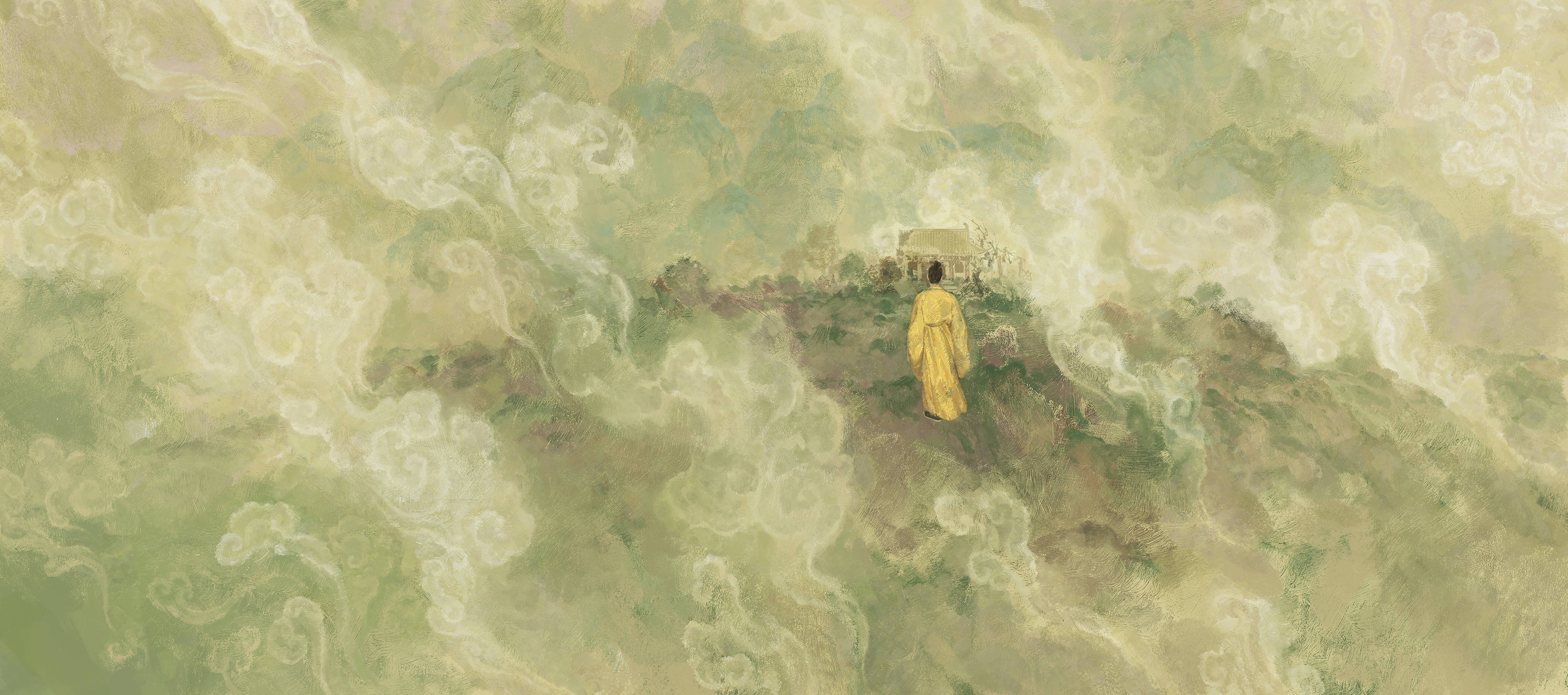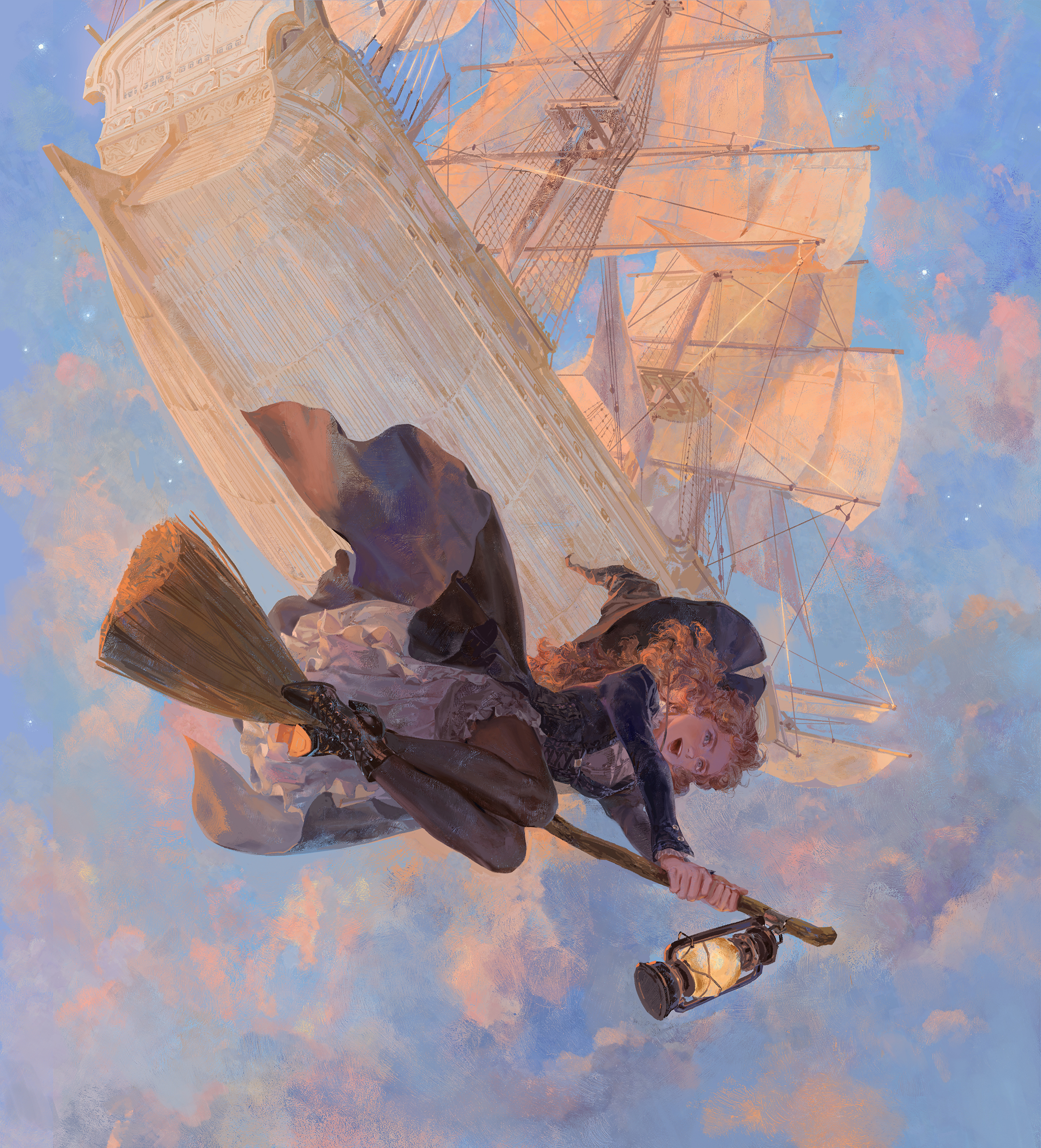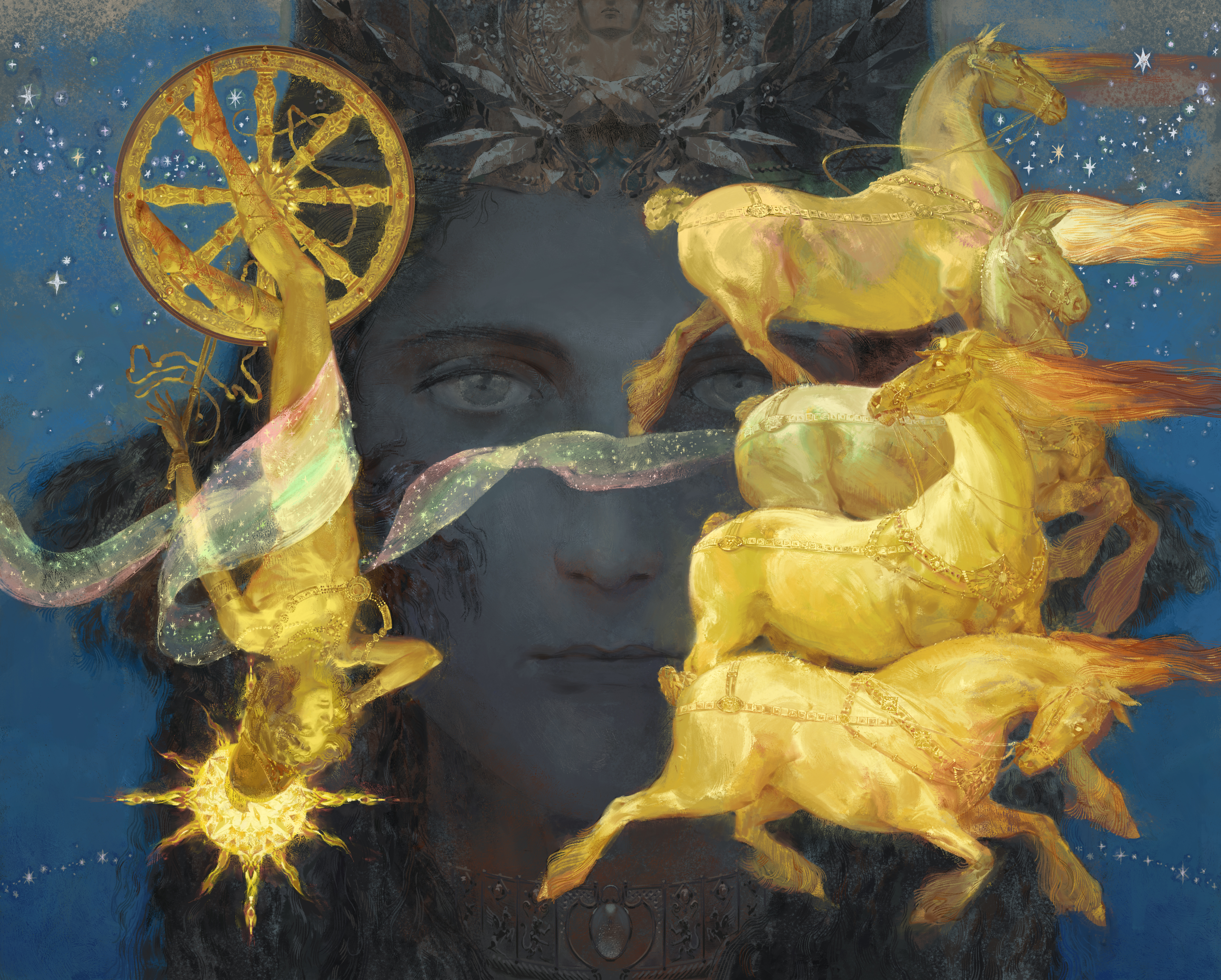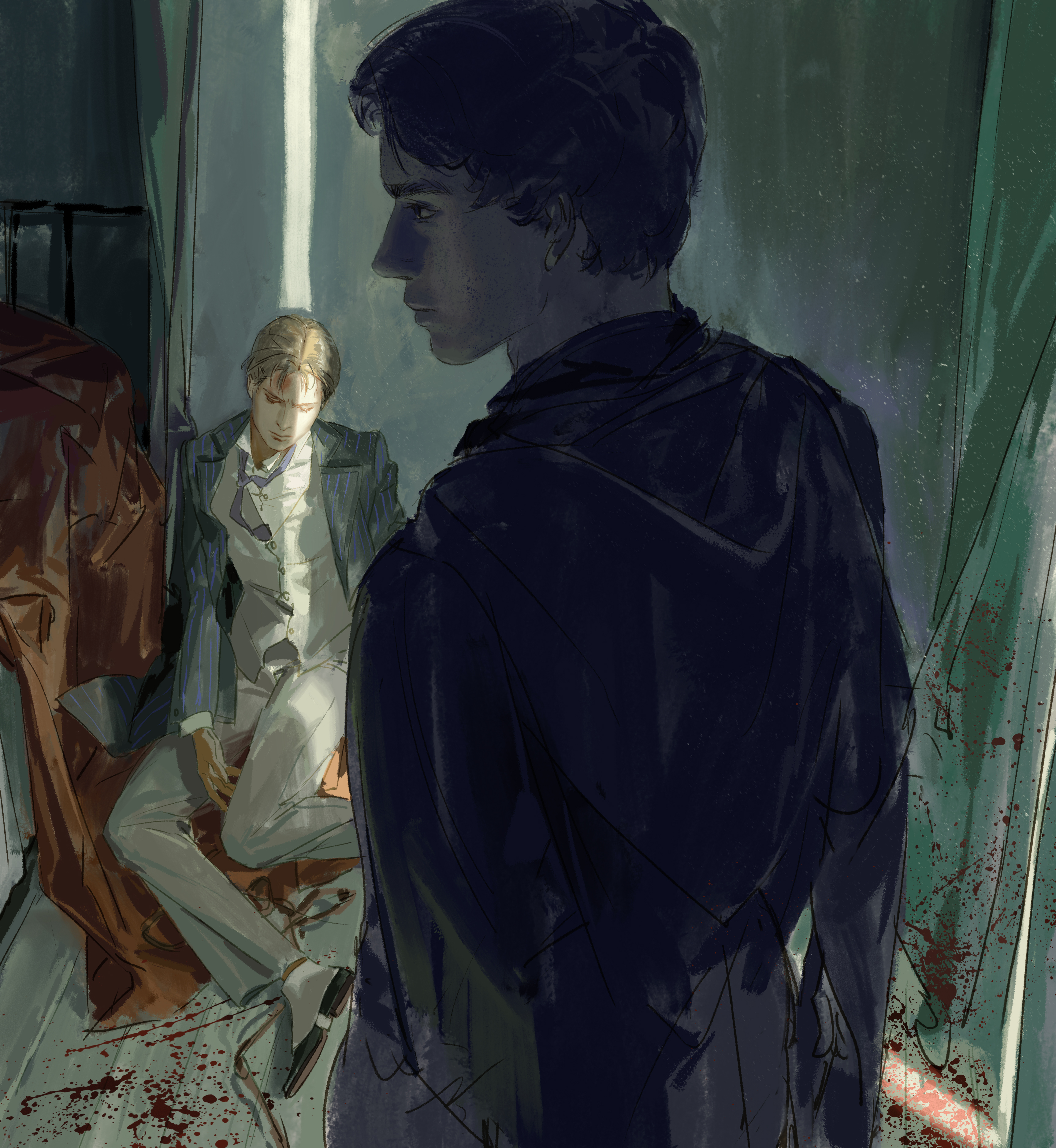

BUY THIS BOOK / Taobao: 遇一蝉
‘The Wanderer’s Trail’, my graduation project, is a set of illustrations originally designed and drawn by me based on ‘Wandering in Wonderlands, the 6th’ , a poem of GUO Pu who lived in the West Jin Dynasty (B.C. 265-316). This picture book tells the story of a male protagonist’s wonderabouts based upon the poet’s experience. He turned to mysterious religious pursuit after being bitterly disappointed by reality, yet finally lost himself in confusion.



















The dilemmas and the particular inner state of the poet presented in ‘Wandering in Wonderlands’ also prevail in other eras and other societies. GUO Pu had tried to escape his fate, confronted with the opposition between ideal and reality, and he lamented time and life. Today we still share these emotions and feelings. In my view, it is important to acknowledge the bitterness of life, to understand it as much as we can and learn to cope with the sense of helplessness. Whether there is a way to compromise with life, solicitude could be found in the process as one tries to know more about life.
ORIGINAL POEM:
游仙诗·其六
‘Wandering in Wonderlands, the 6th’
【西晋】郭璞
GUO Pu (West Jin Dynasty)
杂县寓鲁门,风暖将为灾。
Beyond the east gate of Kingdom Lu the seabird Yuanju perches, heralding a storm coming from the distance.
吞舟涌海底,高浪驾蓬莱。
Upon the landing of it, ship-swallowing fishes rush forth from the sea bottom, creating huge waves higher than the fabled mountain, Penglai.
神仙排云出,但见金银台。
Then I suddenly see all the celestial beings. Flocking out from palaces made of silver and gold, they wander on colorful clouds.
陵阳挹丹溜,容成挥玉杯。
Among them I recognize Ziming of Lingyang, an aged immortal, savoring sulphur as tonic food. Rongcheng, another immortal, is drinking heartedly from a jade cup.
姮娥扬妙音,洪崖颔其颐。
Chang’e plays heavenly on her flute over the feast, and in a glimpse Hongya keeps nodding in compliment.
升降随长烟,飘飖戏九垓。
They fly freely, up and down with the clouds. All they have to do is enjoy immortality in the empyrean.
奇龄迈五龙,千岁方婴孩。
Alas! Some immortals have exceeded the age of the ‘Five Dragons’, before whom a thousand-year-old is merely a toddler.
燕昭无灵气,汉武非仙才。
So it seems to me that even the great King Zhao of the state of Yan has no spiritual talent, and the prestigious Emperor Wu of Han Dynasty does not qualify to join the immortal.
‘Wandering in Wonderlands, the 6th’
【西晋】郭璞
GUO Pu (West Jin Dynasty)
杂县寓鲁门,风暖将为灾。
Beyond the east gate of Kingdom Lu the seabird Yuanju perches, heralding a storm coming from the distance.
吞舟涌海底,高浪驾蓬莱。
Upon the landing of it, ship-swallowing fishes rush forth from the sea bottom, creating huge waves higher than the fabled mountain, Penglai.
神仙排云出,但见金银台。
Then I suddenly see all the celestial beings. Flocking out from palaces made of silver and gold, they wander on colorful clouds.
陵阳挹丹溜,容成挥玉杯。
Among them I recognize Ziming of Lingyang, an aged immortal, savoring sulphur as tonic food. Rongcheng, another immortal, is drinking heartedly from a jade cup.
姮娥扬妙音,洪崖颔其颐。
Chang’e plays heavenly on her flute over the feast, and in a glimpse Hongya keeps nodding in compliment.
升降随长烟,飘飖戏九垓。
They fly freely, up and down with the clouds. All they have to do is enjoy immortality in the empyrean.
奇龄迈五龙,千岁方婴孩。
Alas! Some immortals have exceeded the age of the ‘Five Dragons’, before whom a thousand-year-old is merely a toddler.
燕昭无灵气,汉武非仙才。
So it seems to me that even the great King Zhao of the state of Yan has no spiritual talent, and the prestigious Emperor Wu of Han Dynasty does not qualify to join the immortal.
REARRANGEMENT
The original poem contains many traditional Chinese imageries hard to grope for amateurs. Therefore, I first summarized the plot and rewrote a simplified version of the story based on GUO Pu’s real life experience:Back to the West Jin Dynasty, once a hurricane swept across China and the people suffered. A minor officer in the government, devoted to his job, wished that the Emperor could take immediate actions to alleviate the plight. The officer, however, was bitterly disappointed by the corruption of the system and his limited power of office. Then, he turned to Daoism, hoping to find comfort through religious pursuits. In the end, his attempt failed again and he was left in confusion.
Second, I changed the setting of the dreamland and the immortal, frequently referred to historical materials about West Jin dynasty, to merge the transcendental with GUO Pu’s daily surroundings.
Third, I put more effort to recreate the ‘dream-wondering’ part of the original poem, making more illustrations about the fantastic imageries so as to contrast with the earthly part.
Last, I prepared an ending undecided for this set of illustrations, just like GUO Pu who cut his narrative abruptely and left the reader in wonder. The protagonist’s final decision remained a myth, adding a sense of loss and bewilderment.
INVESTIGATION AND SURVEY
The particulars about the ‘wondering-in-wonderlands’ poem: the history of development from early Qin Dynasty to the Northern and Southern Dynasties ( B.C 420-589).
The life of GUO Pu: the study of ‘Wondering in Wonderlands, the 6th’ based upon GUO Pu’s life story.
Cultural Background
A Reinterpretation of ‘Wondering in Wonderlands, the 6th ’: A Survey of custom literature in the Wei, Jin (B.C. 265-420) and the Northern and Southern Dynasties (B.C. 420-589)
Setting Plotline-Image Narration

The major dificulty lies in creating connections between scenarios.
A narrative built through images: a study of ‘picture book’.
‘Picture book’ as a media: in what way do ‘page-turning’ and ‘page management’ contribute to the content?
Art-Charaters
Clothing, hair-styles and hair accsessories: the differentiation between male and female, the nobilities and the ordinary people, the civil officials and the military officers
Special studies of caps: the ‘Jinxian’ cap (a typical thing of the time of the protagonist, identifies him as a civil official)



Scene Settings
I studied extensively on the interior and exterior architectural patterns in relative academic materials, including the measurements and distributions of rooms, patterns of the palace, the appearances of roofs.
Historical-period Setting: Due to lack of information about the West Jin Dynasty, I referred to academic materials about lives in the East Jin; the Northern Wei; the Eastern and Western Wei, and another few contemporary dynasties dated from 25 to early 581 B.C..
Interior Furnishings: seats, lights, tablewares, and other articles used in feasts and worships (e.g. ‘Jian Gu’ , a musical instrument)
Frescos Studies: The archaeolohgical information of frescos of the Northern Wei Dynasty is plenty enough. (e.g. frescos from the Northern Dynasty discovered in a tomb in Jiuyuangang. )
The City Layout
Other Articles: boats for civil uses, large-scale cargo ships, and the seabird ‘Yuanju’
Cultural Relics: refer to archaeological discoveries including clay dolls and other artifacts; a close study of relative historical papers, reports and restored books.

An attempt to restore history in art and other concerns:
I have put as much realist details as possible in my illustrations to reflect the circumstances and atmostphere conveyed in the poem. This, however, does not mean the piling of unsorted information. Back to the Wei and Jin Dynastics, chaotic political situation led to the popularization of Daoism and religious pursuit in society. Realist elements multiplied in ‘Wander-in-Wonderland’ poems of the time and ‘The Wanderer’s Trail’ came into being. During the design stage of a fresco in the scene, I refer heavily to ‘Rising to Heaven’, a fresco discovered in a tomb of the Northern Wei Dynasty in Jiuyuangang. It represents the heated desire of attaining immortality among people in the Wei and Jin Dynasties. My design of the fresco also implies the disillusion of the protagonist. It is piling off gradually. The candels are burning to the very end. The broken cloths hang off the roof in silence. All these symbolize the cruelty of reality and the illusory nature of ideals.




















